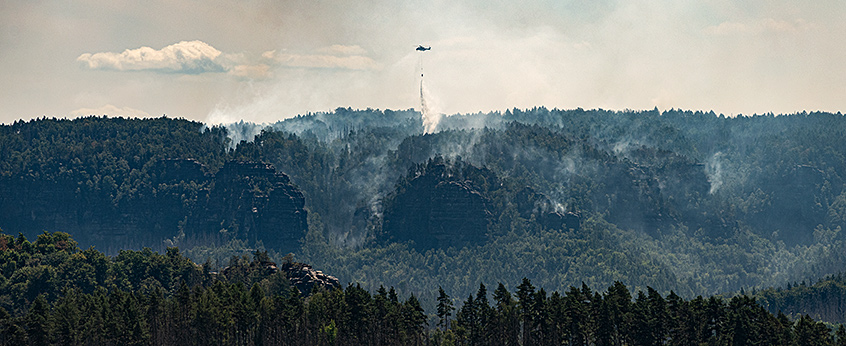
Department of Compound Environmental Risks (CER)
Extreme events such as floods, droughts, or wildfires often result from the interaction of multiple reinforcing factors. However, the assessment of extreme event risks, as traditionally practiced, rarely takes this mechanism into account. It would, therefore, greatly benefit from the identification of these factors, modeling their dependencies, and quantifying their contributions to the extreme event. Complex feedback loops within the Earth system, as well as among various societal influencing factors (e.g., land use, water management), make this a challenging task. The availability of unprecedented volumes of Earth observation data and process models combined with modern statistical and machine learning approaches offer new research opportunities for this purpose.
The scientists at the Department of CER assess the risk of compound events, such as concurrent drought-heat events, wind and precipitation extremes, widespread flooding, or successive drought periods, under current and possible future climate conditions. To better understand events with significant impacts, we identify and quantify the factors that favor their occurrence. Furthermore, we investigate the interactions between physical and socio-economic factors.
Another research branch of our department focuses on worst-case scenarios and new types of compound events that could occur as a result of global warming and changes in the water cycle, threatening the resilience of natural and human systems.
In our department, expertise from various fields is combined, including climate science, hydrology, agricultural science, vegetation modeling, statistics, and machine learning. Using various data sources such as weather observations, real-time and remote sensing data, climate and climate impact models, we develop new conceptual and computational approaches. By building robust machine learning models and interpretable learning approaches, we complement insights obtained from process-based climate and climate impact models (e.g., hydrological models, forest models, crop models).
The methods we develop for identifying and quantifying reinforcing influencing factors in the occurrence of extreme events should be applicable in a variety of contexts and fields. Ultimately, our goal is to improve the assessment of climate risks today and in the future.